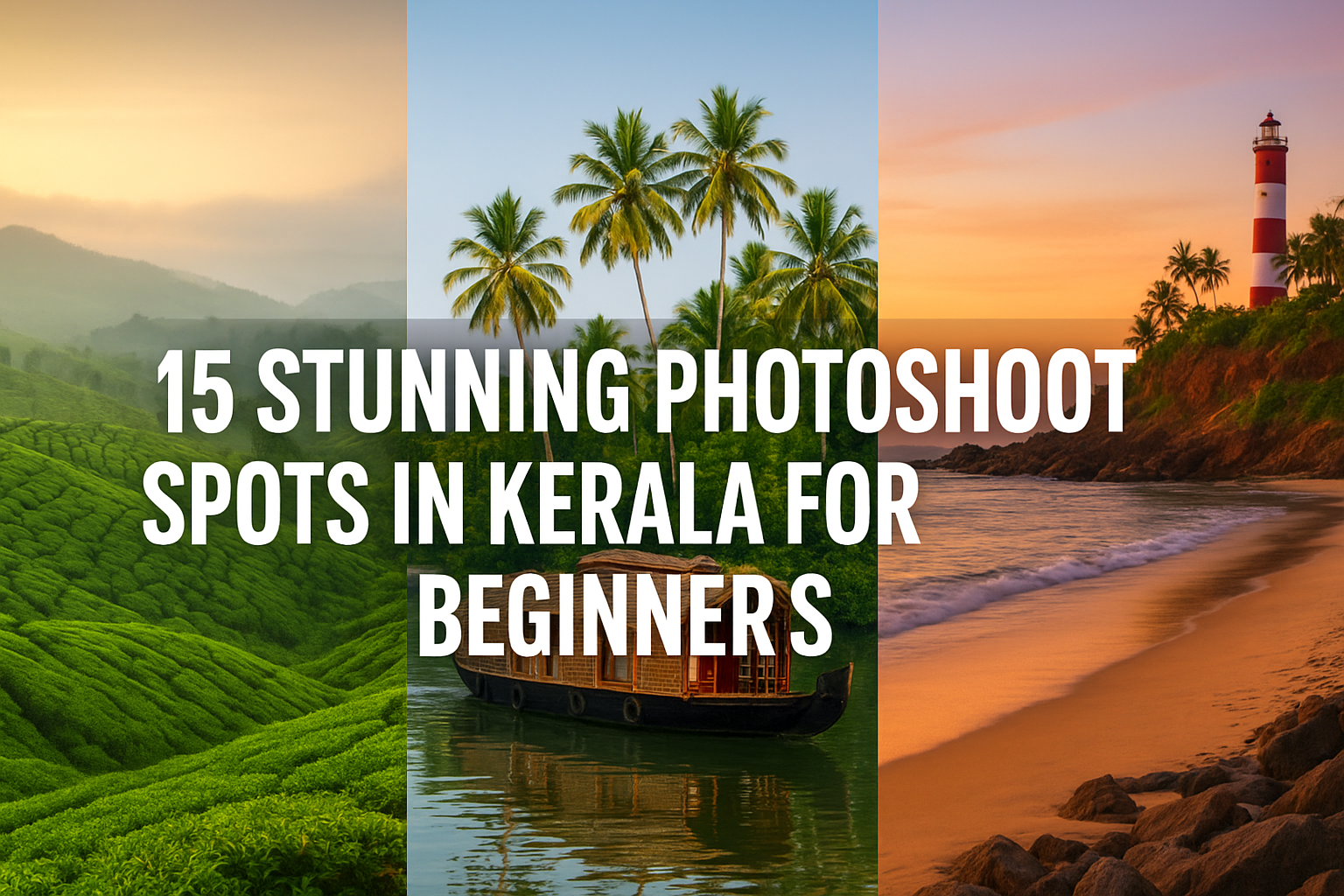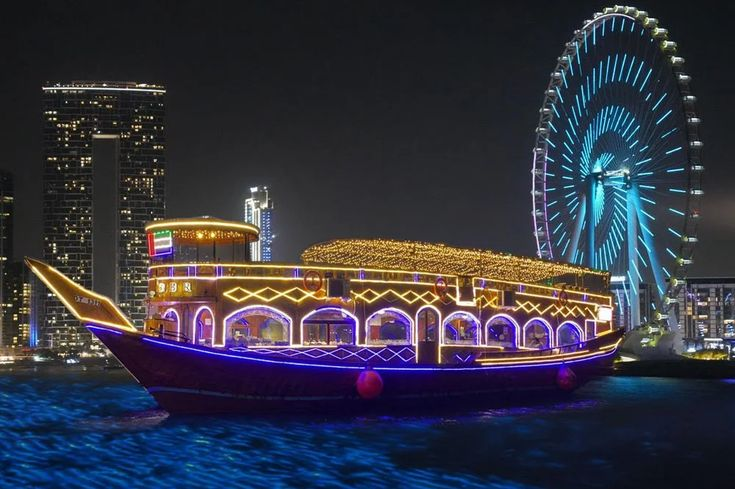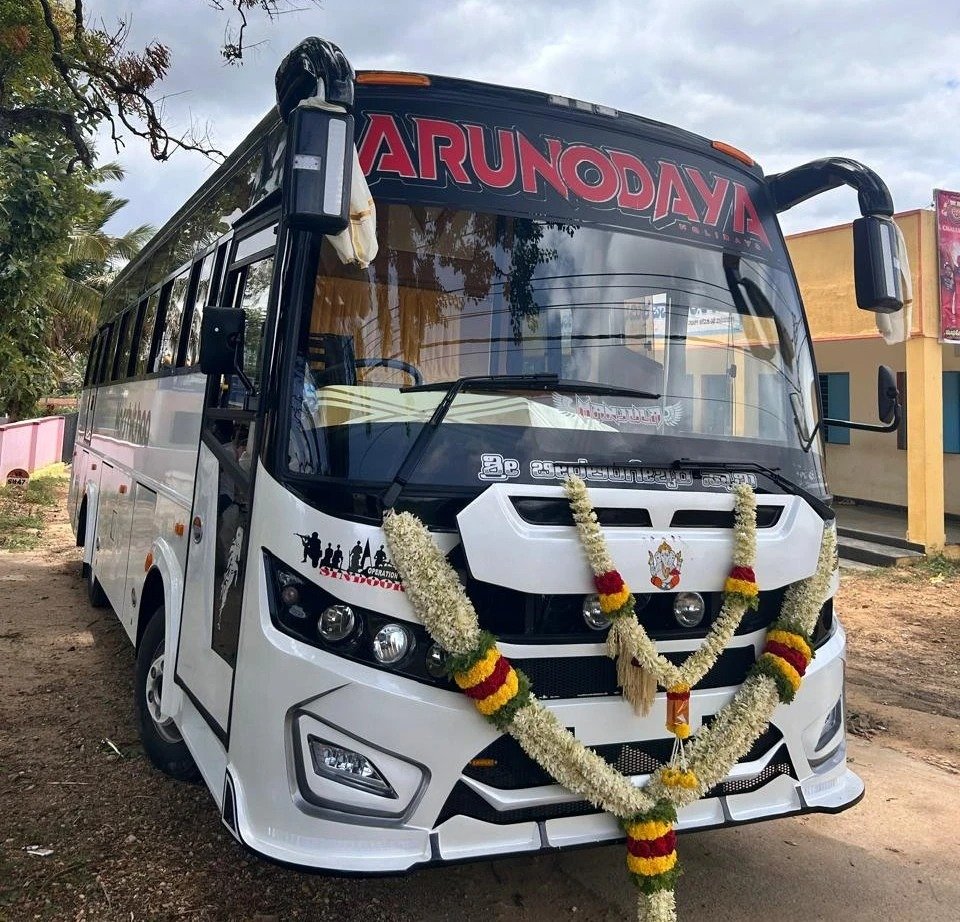Introduction to Kerala Backwaters
The Kerala Backwaters are an extensive network of interconnected canals, rivers, lakes, and inlets that stretch parallel to the Arabian Sea coast, also known as the Malabar Coast, in the southern Indian state of Kerala. This intricate system of waterways showcases the unique geography of the region, which has been shaped and nurtured by centuries of natural and human influence. The backwaters are a vital part of Kerala’s ecology and culture, serving as a lifeline for local communities and a magnet for tourists from around the world.
Spanning over 900 kilometers, the Kerala Backwaters are renowned for their tranquil and picturesque landscapes. These waterscapes are dotted with lush, green paddy fields, swaying coconut palms, and charming villages, offering a serene escape from the hustle and bustle of city life. The backwaters are also home to an array of wildlife, including various species of fish, birds, and amphibians, making it a biodiversity hotspot.
One of the most distinctive features of the Kerala Backwaters is the houseboat, or ‘kettuvallam,’ which has become synonymous with the region. Originally used for transporting rice and spices, these traditional boats have been transformed into floating hotels that provide a unique and immersive way to experience the backwaters. Tourists can enjoy leisurely cruises, savoring the local cuisine and the breathtaking views that the backwaters offer.
The Kerala Backwaters are more than just a natural wonder; they are a living, breathing entity that reflects the harmonious coexistence of humans and nature. This unique blend of natural beauty, cultural richness, and ecological significance makes the Kerala Backwaters a sought-after destination for travelers seeking a blend of relaxation, adventure, and cultural immersion.
Historical Significance
The Kerala Backwaters, a network of interconnected canals, rivers, and lakes, have been pivotal in shaping the region’s history and culture. For centuries, these waterways served as crucial arteries for transportation and trade, enabling the movement of goods and people across the lush landscape. The backwaters were not merely geographical features; they were lifelines that fostered the growth of settlements and the flourishing of local economies.
Historically, the Kerala Backwaters played a significant role in the spice trade, which was the backbone of Kerala’s economy. Spices such as black pepper, cardamom, and cinnamon were highly prized commodities that drew traders from across the world, including Arabs, Chinese, and Europeans. The backwaters provided a convenient and efficient route for transporting these valuable goods from the interior regions to the ports along the Arabian Sea. This facilitated not only local commerce but also international trade, establishing Kerala as a major hub in the global spice market.
Anecdotes from history highlight the strategic importance of the backwaters. For instance, ancient chronicles speak of the bustling activity along the canals where boats laden with spices, rice, and coir navigated the waters, contributing to the prosperity of the region. Traditional boats known as ‘Kettuvallams’ were ingeniously designed to carry heavy loads, showcasing the ingenuity of the local people in maximizing the utility of their natural resources.
Moreover, the backwaters were integral to the livelihood of the local communities. Fishing, agriculture, and coir making were some of the primary occupations sustained by the backwaters. Paddy fields, often referred to as ‘Kayal’ lands, thrived on the nutrient-rich silt deposited by the waterways. The symbiotic relationship between the people and the backwaters is evident in the sustainable practices that have been passed down through generations, ensuring that these waterways continue to support the region’s economy and way of life.
Ecological Importance
The Kerala Backwaters, a unique and intricate network of lagoons, lakes, and canals, play a crucial role in supporting a diverse ecosystem. These waters are teeming with life, featuring a rich variety of flora and fauna that contribute to the region’s ecological balance. One of the most prominent features of this ecosystem is the extensive mangrove forests. These mangroves act as natural barriers against coastal erosion, storm surges, and flooding, while also providing a vital habitat for various marine species.
The backwaters are home to a plethora of marine life, including numerous species of fish, amphibians, and crustaceans. The brackish waters create a unique environment where freshwater and saltwater species coexist, fostering a rich biodiversity. This intricate web of life supports the livelihoods of local communities who rely on fishing and aquaculture.
In addition to marine life, the Kerala Backwaters are a haven for bird species, attracting both resident and migratory birds. Birdwatchers can spot an array of species, including kingfishers, cormorants, and herons. The presence of these birds not only signifies a healthy ecosystem but also enhances the region’s appeal as a destination for eco-tourism.
Conservation efforts are imperative to protect this fragile ecosystem. Initiatives such as the establishment of protected areas and the promotion of sustainable tourism practices are essential steps in preserving the backwaters’ natural beauty and ecological significance. Local communities, along with governmental and non-governmental organizations, are actively involved in these conservation efforts, recognizing the importance of maintaining the ecological balance for future generations.
The Kerala Backwaters’ ecological importance cannot be overstated. From the mangroves that shield the coast to the diverse marine life and vibrant bird populations, every element of this ecosystem plays a vital role in sustaining the region’s biodiversity. Through continued conservation efforts, we can ensure that the Kerala Backwaters remain a thriving natural wonder.
Cultural Experiences
The Kerala Backwaters offer a myriad of cultural experiences that captivate and enrich the senses. One of the most iconic symbols of this region is the traditional houseboat, known locally as kettuvallam. These houseboats, meticulously constructed using ancient techniques, provide a unique and immersive way to explore the serene waters. Travelers can enjoy a leisurely cruise while savoring traditional Kerala cuisine, an experience that merges comfort with authenticity.
Local festivals in the Kerala Backwaters region provide a vibrant tapestry of cultural heritage. Festivals such as Onam, with its grand feasts and elaborate Pookalam flower designs, offer a glimpse into the rich traditions of Kerala. Similarly, the snake boat races during the Nehru Trophy Boat Race captivate visitors with their spirited and competitive nature, showcasing the communal harmony and teamwork of local communities.
Art forms like Kathakali and Mohiniyattam are integral to the cultural fabric of Kerala. Kathakali, a classical dance-drama characterized by its elaborate costumes and expressive gestures, brings to life ancient tales from Hindu epics. Mohiniyattam, known as the dance of the enchantress, captivates audiences with its graceful movements and emotive storytelling. These performances, often held at cultural centers and local gatherings, offer an opportunity for visitors to witness and appreciate Kerala’s artistic heritage.
Interaction with the local village communities provides a deeper understanding of the region’s culture. Visitors can participate in traditional activities such as coir making, pottery, and fishing, gaining hands-on experience of the local way of life. Engaging with the villagers allows for meaningful cultural exchange, fostering a sense of connection and appreciation for the unique traditions of the Kerala Backwaters.
In essence, the cultural experiences in the Kerala Backwaters are as diverse as they are enriching, providing visitors with a holistic understanding of the region’s heritage and way of life.
Popular Destinations
The Kerala Backwaters are renowned for their serene beauty and diverse attractions, making them a must-visit for travelers. Among the most notable destinations within this enchanting region are Alleppey (Alappuzha), Kumarakom, and Kollam. Each of these locations offers unique experiences that cater to various interests, from scenic landscapes to cultural immersions and recreational activities.
Alleppey (Alappuzha)
Often referred to as the “Venice of the East,” Alleppey is famous for its intricate network of canals, lagoons, and lakes. This picturesque town is a hub for houseboat cruises, providing visitors with a tranquil journey through the backwaters. The annual Nehru Trophy Boat Race, held on Punnamada Lake, is a major attraction, drawing crowds from around the world. Alleppey’s beaches, such as Marari Beach, offer a peaceful retreat with golden sands and clear waters. Additionally, the town is home to several historic sites, including the Alleppey Lighthouse and the ancient Mullakkal Bhagavathy Temple.
Kumarakom
Located on the banks of Vembanad Lake, Kumarakom is a haven for nature enthusiasts. The Kumarakom Bird Sanctuary, spread across 14 acres, is a paradise for bird watchers, hosting species such as Siberian cranes, egrets, and kingfishers. The backwater village is also known for its luxurious resorts and traditional houseboats, which provide an immersive experience of Kerala’s natural beauty. Visitors can engage in activities like fishing, canoeing, and exploring the lush paddy fields. The Aruvikkuzhi Waterfall, located nearby, is another must-see spot, offering a scenic picnic location amidst cascading waters.
Kollam
As a historical port city, Kollam boasts a rich cultural heritage and stunning backwater landscapes. The Ashtamudi Lake, known as the gateway to the backwaters, is a primary attraction here. Houseboat cruises on the lake offer a serene escape and a glimpse into the traditional village life along the shores. Kollam’s beaches, such as Thirumullavaram and Kollam Beach, are perfect for leisurely strolls and sunset views. The city’s historical landmarks include the Thangassery Lighthouse and the ancient Mahatma Gandhi Beach, which provide insights into the region’s maritime history. Additionally, the Palaruvi Waterfalls, located in the nearby forest, offer a refreshing retreat with their natural beauty.
Activities and Attractions
The Kerala Backwaters offer a plethora of activities and attractions that captivate tourists from around the globe. One of the most iconic experiences is embarking on a houseboat cruise. These traditional houseboats, known as ‘kettuvallams,’ provide a serene journey through the intricate network of canals, rivers, and lakes. Equipped with modern amenities, they offer an unparalleled way to immerse oneself in the tranquil beauty of the backwaters while enjoying the comforts of a floating home.
Canoeing and kayaking are also popular choices for those seeking a more active exploration of the backwaters. These activities allow tourists to navigate the narrower channels and get closer to the lush greenery and diverse wildlife that inhabit the region. The gentle pace of canoeing and kayaking provides an intimate experience, fostering a deeper connection with the natural surroundings.
Bird watching enthusiasts will find the Kerala Backwaters a haven, as the region is home to a variety of bird species. From kingfishers and cormorants to herons and egrets, the backwaters are a vibrant spectacle of avian life. Early morning or late afternoon excursions are ideal for spotting these magnificent creatures in their natural habitat.
Fishing is another engaging activity that attracts both locals and tourists. The backwaters are abundant with fish, and traditional fishing methods provide a unique glimpse into the local way of life. Visitors can try their hand at fishing using age-old techniques, adding a touch of authenticity to their travel experience.
Exploring the local markets is an essential part of any visit to the Kerala Backwaters. These bustling markets are rich in cultural and culinary delights, offering everything from fresh produce and spices to handcrafted souvenirs. Interacting with local vendors and sampling regional delicacies provide an enriching cultural experience.
For a more structured exploration, guided tours and special excursions are highly recommended. These tours often include visits to historical sites, cultural performances, and interactions with local communities. Knowledgeable guides offer valuable insights into the history, culture, and ecology of the backwaters, enhancing the overall understanding and appreciation of this unique destination.
The culinary experiences awaiting visitors in the Kerala Backwaters are both rich and diverse, offering a tantalizing introduction to traditional Kerala cuisine. The region’s food culture is deeply intertwined with its natural environment, where the abundant waterways contribute significantly to the local gastronomy. One of the most celebrated aspects of Kerala’s cuisine is its seafood, with fresh catches playing a starring role in many dishes. Visitors can savor the iconic Karimeen, also known as Pearl Spot Fish, which is often marinated with a blend of spices and either fried or cooked in banana leaves, infusing the fish with aromatic flavors.
Coconut, a staple in Kerala’s culinary repertoire, is another significant element, lending its unique taste to a variety of dishes. Coconut milk, grated coconut, and coconut oil are commonly used, providing a distinct richness to the food. Traditional recipes such as appam with stew showcase the versatility of coconut. Appam, a type of rice pancake with a soft and fluffy center, pairs perfectly with a creamy coconut milk-based stew, typically made with chicken or vegetables, creating a delightful combination that reflects the local palate.
The use of spices is another hallmark of Kerala cuisine. Spices like black pepper, cardamom, cloves, and cinnamon are not just flavor enhancers but also an integral part of the region’s culinary heritage. These spices are often blended into masalas that form the base of many dishes, imparting depth and complexity to the flavors. From the fiery fish curries to the aromatic vegetarian dishes, the judicious use of spices ensures that each meal is a sensory experience.
Food in the Kerala Backwaters is more than just sustenance; it is an essential component of the cultural experience. Dining on a traditional houseboat, while drifting through the serene backwaters, allows visitors to immerse themselves fully in the local way of life. The flavors, aromas, and textures of the local delicacies provide a profound connection to the region’s heritage, making the culinary journey through Kerala Backwaters an unforgettable adventure.
Travel Tips and Recommendations
When planning a trip to the Kerala Backwaters, timing is crucial for maximizing your experience. The optimal period to visit is between October and March, when the weather is most pleasant and conducive to exploring the picturesque waterways. Avoid the monsoon season from June to September, as heavy rains can disrupt travel plans and limit activities.
Transportation to and within the Kerala Backwaters is relatively convenient. Cochin International Airport is the nearest major airport, and from there, you can hire a taxi or use public transportation to reach popular backwater destinations such as Alleppey or Kumarakom. For a more immersive experience, consider renting a car with a driver who can navigate the local terrain and offer insights into the region.
Accommodation options in the Kerala Backwaters range from luxury resorts to budget-friendly homestays. Houseboat cruises offer a unique lodging experience, allowing you to stay on traditional Kettuvallams while drifting through serene canals. It is advisable to book your houseboat cruise in advance, especially during peak tourist season, to ensure availability and better rates. Websites like Kerala Tourism and various travel agencies provide reliable booking services.
When packing for your trip, lightweight and breathable clothing is recommended due to the warm climate. Don’t forget essentials like sunscreen, insect repellent, and a hat to protect yourself from the sun. Comfortable footwear is crucial for exploring both the houseboats and the surrounding villages. Additionally, carrying a small first-aid kit with basic medications can be beneficial.
Travel advisories and health precautions should not be overlooked. Make sure to stay updated on any travel alerts and consult with your healthcare provider about necessary vaccinations. Drinking bottled water and being cautious with street food can help prevent common travel-related illnesses. By following these practical tips and recommendations, your visit to the Kerala Backwaters can be both enjoyable and memorable.



